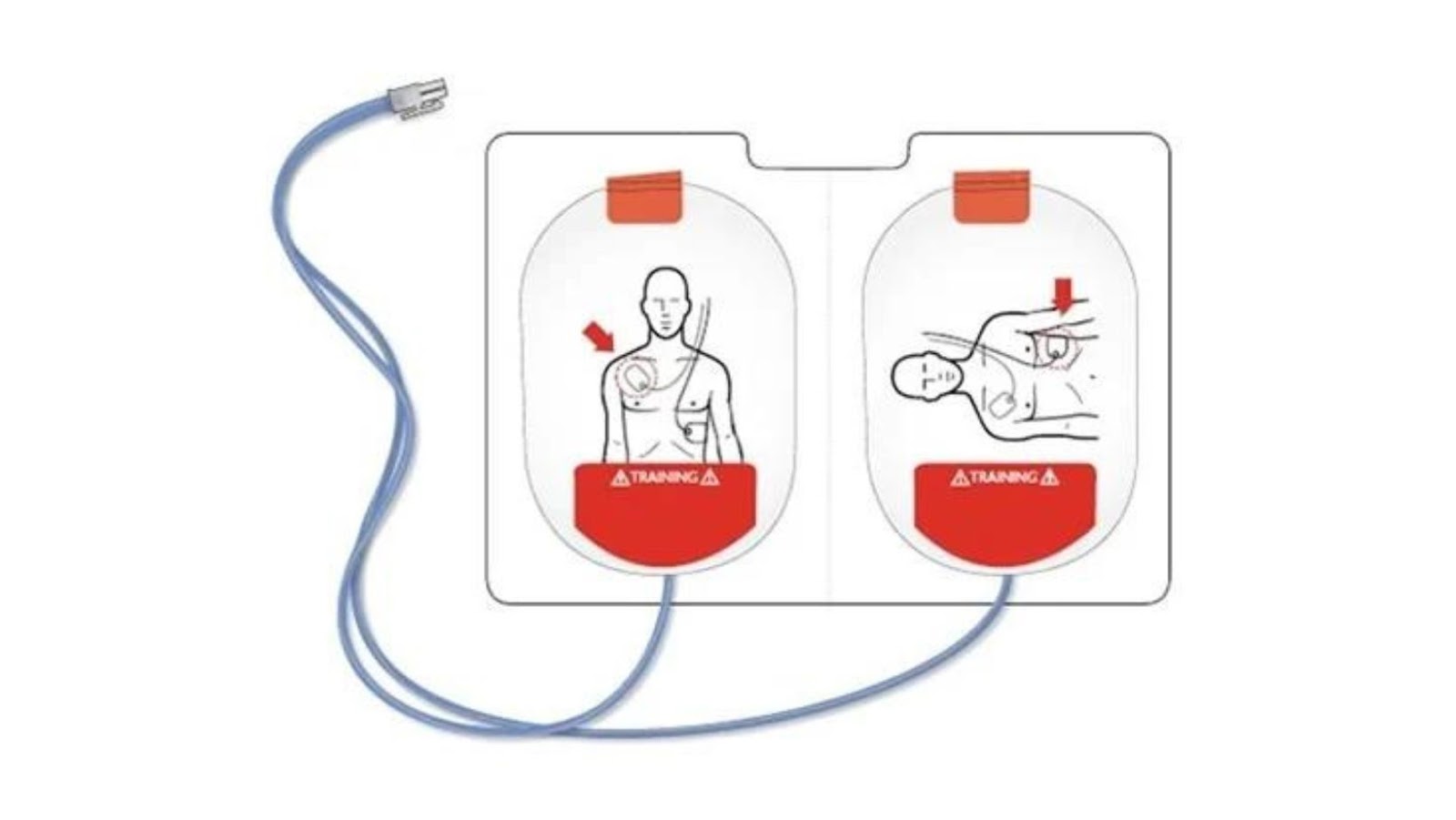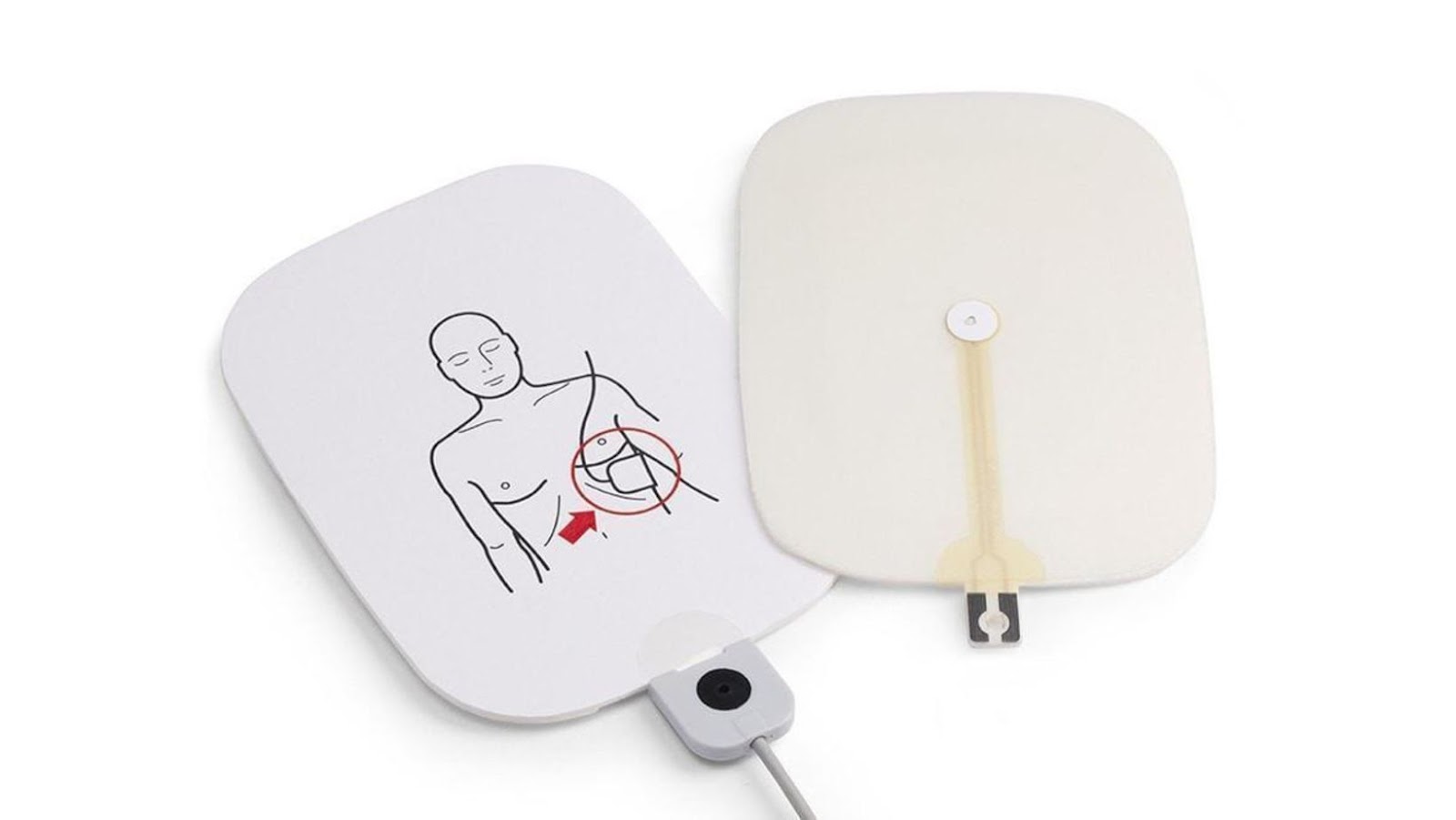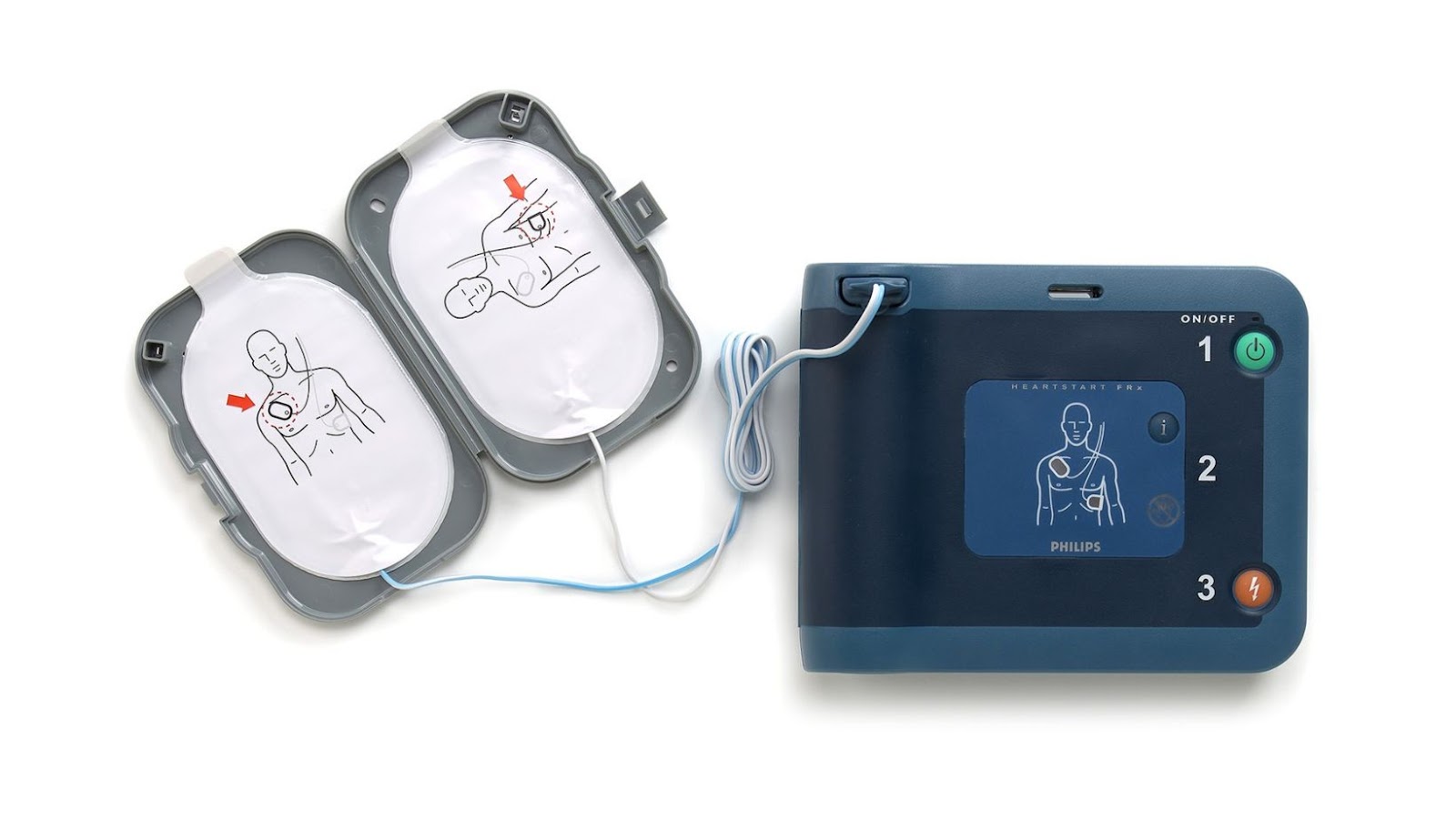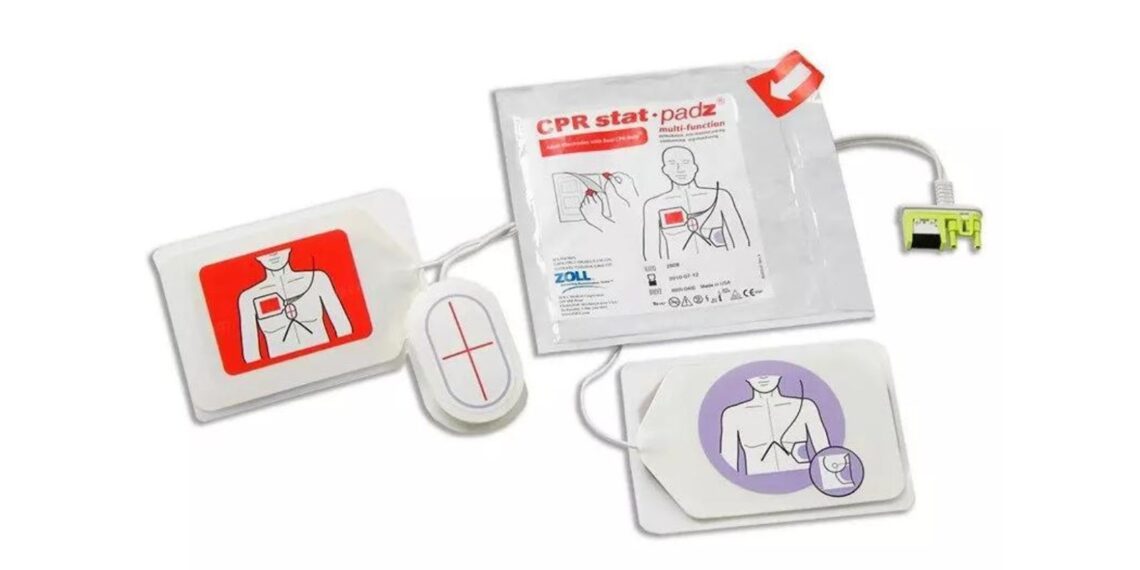Placing AED Pads in the anterolateral position is essential for adults 8 years and older as this position can provide the most accurate readings and the best results during CPR. The anterolateral placement also allows for a quick and easy placement of AED Pads.
This article will discuss why the anterolateral position is best for adults 8 years and older and how to use it when placing AED Pads.
Understanding The Anatomy Of The Heart And Chest
To properly use an AED device on an adult or child over the age of 8, it’s important to understand the anatomy of the heart and chest and where the AED pads should be placed. The anterolateral placement is crucial for ensuring the electrical charge from the AED correctly passes through the heart to restore a normal heart rhythm.
To find the correct placement for the AED pads:
Locate the base of the patient’s sternum (breastbone) and right and left ribs.
Place one AED pad on the upper right side of the patient’s chest, just below the collarbone, and the other on the left side, under the armpit area.
This anterolateral pad placement is important as it allows the electrical charge to travel from one pad to another, passing directly through the heart’s critical areas.
Pro-tip: When using an AED device, follow the prompts provided, which will guide you through the steps for proper pad placement and administering the electrical shock.
Importance of proper pad placement for effective defibrillation
Proper pad placement is crucial for effective defibrillation in sudden cardiac arrest (SCA) cases. The anterolateral placement of AED pads provides the most effective shock delivery to the heart.
Here’s where AED pads should be placed in the anterolateral placement for adults and 8 years and older:
Peel the backing off the AED pads.
Place the pads on the patient’s bare chest, one on the upper-right chest, just below the collarbone and the other on the lower-left side, below the armpit and to the left of the breastbone.
Ensure the pads do not touch clothes, jewelry, or body hair.
Stand clear, follow the AED voice prompts, or press the shock button if advised.
Remember that quick intervention with proper pad placement can increase the chances of survival in SCA cases.
Differences between the anterolateral and anterior pad placement
The two main types of Automated External Defibrillator (AED) pad placements are anterolateral and anterior, but anterolateral placement is important for effective defibrillation in adults and children ages 8 and older.
Placement
Method
Anterolateral
This requires pads to be placed on the upper right side of the chest and lower left side of the ribcage, which helps to avoid the heart’s electrical conduction system and prevent the occurrence of burns or cardiac dysrhythmias. Anterolateral placement is the preferred pad placement method for adult defibrillation.
Anterior
This method involves placing both pads on the front and rear of the chest. This method is used for infants and younger children in case of AED placement difficulty.
Pro Tip: Ensure AED pads are not placed on medication patches, subcutaneous defibrator patches or wounds.

Where Should AED Pads Be Placed In The Anteroposterior Placement For Adults And 8 Years And Older
Placing automated external defibrillation (AED) pads in the anterolateral position for adults 8 years and older can be tricky. It is important to get it right, as incorrect placement may lead to complications.
This article will discuss the best and easiest way to place the pads in the anterolateral position.
Preparing the patient for pad placement
Preparing the patient before placing the AED pads ensures maximum efficiency and safety. Here’s what you need to do:
Ensure the patient is lying flat on their back on a dry surface.
Remove any wet clothing and dry the chest area where the pads will be placed.
If the patient has a lot of chest hair, you may need to shave the area where the pads will be placed.
Ensure that no other pads, jewelry, or clothing are in the way of the AED pads placement.
Confirm that the patient is clear of anyone, and ensure that no one touches the patient when analyzing or delivering a shock with the AED.
Only then proceed with placing the AED pads on the patient’s anterolateral chest in the position indicated on the pads, and follow the audio and visual prompts of the AED.
Remember, the effectiveness of your actions during an emergency can save lives. So, always inform and educate yourself and others about the process of AED usage.
Identifying the placement area on the chest
The anterolateral position is the recommended placement area for AED pads in adults and children 8 years and older.
Here is a step-by-step guide for proper placement:
First, locate the two landmarks on the victim’s chest: the right midclavicular and the left anterior axillary lines.
Place the AED pads, one on the right side of the chest above the nipple, and the other on the left side of the chest below the armpit with the upper edge of the pad just below the victim’s collarbone.
Ensure the pads are firmly attached to the victim’s chest and free from clothing or moisture.
Step back from the victim and allow the AED to analyze the heart rhythm and deliver therapy if necessary.
Pro Tip: It’s important to follow the instructions provided with the AED device for proper pad placement and therapy delivery to increase the chances of saving the victim’s life.
Applying the first pad and ensuring proper placement
Proper placement of AED pads in the anterolateral position is crucial for effective defibrillation of adults and children aged 8 and above in cardiac emergencies. Here’s how to place AED ( Automated External Defibrillator) pads in the anterolateral position for adults and children aged 8 years and above:
Remove clothing from the patient’s chest area.
Locate the apex of the patient’s heart- by finding the left nipple and going straight down to the left side of the chest.
Open the pad package and remove the pads.
Peel the backing off the pads and apply the pad with the blue connector to the chest, aligning it with the apex of the heart.
Apply the second pad with the red connector to the side of the chest, under the armpit area.
Ensure the pads’ placement is correct, and the pads are firmly attached.
Follow the AED prompts to complete the defibrillation.
Proper pad placement can be the difference between life and death in a cardiac emergency, so ensure you know where to place the AED pads.
Applying the second pad and ensuring proper placement
When placing AED pads in an anterolateral position for adults and children over 8, following the correct steps for proper placement is essential.
Here’s what you need to know:
1. Once you’ve turned on the AED, place one pad on the upper right side of the person’s chest, just below the collarbone.
2. Place the second pad on the left side of the chest, just below the armpit, and slightly below the other pad to allow for an electrical pathway between the pads.
3. Ensure both pads are positioned correctly, and the adhesive makes firm contact with the skin.
4. Stand clear of the person and allow the AED to analyze their heart rhythm.
5. If the AED advises delivering a shock, ensure nobody touches the person and press the shock button as directed.
By following these steps, you can ensure that the AED pads are properly placed, and the person receives the necessary care in an emergency.

Common Errors To Avoid When Placing AED Pads In Anterolateral Position
Placing AED pads in an anterolateral position for adults 8 and older helps ensure quick and accurate life-saving treatment delivery. But some common errors could be made when placing these AED pads. Let’s look at these errors and how to avoid making them when placing AED pads in an anterolateral position.
Applying pads too high or too low on the chest
When placing AED pads on an adult or child 8 years old and older in the anterolateral position, it is crucial to avoid placing them too high or too low on the chest. Incorrect pad placement can lead to an ineffective shock and waste valuable time in a medical emergency.
Here are the steps to follow for proper pad placement:
1. Remove the patient’s outer clothing and wipe the bare chest dry.
2. Apply the pads on the bare chest, one on the upper right chest and the other on the lower left chest.
3. Ensure the pads are placed at least one finger’s width away from the sternum and nipples, and two inches above any implanted medical devices or medication patches.
4. Avoid placing the pads on any medication patches or areas with excessive chest hair.
Proper pad placement can help ensure a successful defibrillation and increase the likelihood of saving a life during a cardiac emergency.
Applying pads too close together or too far apart
When placing AED pads in the anterolateral position for adults and children 8 years and older, it is important to avoid two common errors: applying the pads too close together or too far apart.
Here’s a simple guide on where to place AED pads in the anterolateral position:
Locate the middle of the patient’s chest and place the first pad below the collarbone on the right side, with the center of the pad in line with the armpit.
Place the second pad on the left side of the chest, just below the armpit, with the center of the pad in line with the nipple.
Ensure the pads are at least 2 inches apart, but no more than 8 inches apart.
This position allows for the most effective shock delivery to the heart.
Pro tip: Ensure the patient’s chest is dry and free from medication patches or lotions before applying the AED pads for maximum effectiveness.
Failure to ensure proper contact between pads and skin
One of the most common errors to avoid when placing AED pads in the anterolateral position is the failure to ensure proper contact between pads and skin. This can greatly reduce the effectiveness of the AED and endanger the patient’s life.
Here’s what you need to do:
Ensure the patient’s chest is dry and moisture-free, such as sweat or water, to enhance the contact between the pads and skin.
Remove any medication patches or chest hair on the chest to prevent interference with the pad’s contact with the skin.
Place one pad on the upper right side of the chest and the other below the left armpit, along the mid-axillary line.
Ensure both the pads are firmly in place, with no folds, wrinkles, or loss of adhesion.
Make sure there are no gaps between the pads and skin.
Press the pads firmly onto the skin to create a solid connection.
Follow the device prompts and stand clear of the patient while the AED analyses the patient’s rhythm.
Pro Tip: Follow the manufacturer’s instructions and receive proper training before using an AED.

Tips For Successful AED Pad Placement In Anterolateral Position
When placing AED pads in the anterolateral position for adults 8 years or older, knowing the correct technique for successful placement is important. In addition, knowing the easiest way to place the pads is also beneficial to ensure the best results. This article will discuss tips and tricks to ensure successful AED pad placement in the anterolateral position.
Clear communication and teamwork during resuscitation efforts
Clear communication and teamwork are crucial during resuscitation efforts. In particular, ensuring correct placement of AED pads is essential for successful defibrillation.
Here’s where AED pads should be placed in the anterolateral position for adults and 8 years and older:
The first pad should be placed on the upper right side of the chest, just below the clavicle.
The second pad should be placed on the left side of the chest, just below the armpit and to the left of the nipple.
Here’s the easiest way to place AED pads:
- Start by turning on the AED and following the voice prompts.
- Locate the two pads included with the AED.
- Remove the backing from one of the pads and place it on the upper right side of the chest.
- Remove the backing from the second pad and place it on the left side of the chest.
- Follow the voice prompts to deliver the shock if needed.
Remember, clear communication and teamwork during resuscitation efforts can make all the difference in saving a life.
Regular training and practice with AED pad placement techniques
Regular training and practice with AED pad placement techniques is essential for successful placement in the anterolateral position.
Here are the key tips for successful AED pad placement in the anterolateral position:
– Place the first AED pad on the upper right side of the chest, just below the collarbone.
– Place the second AED pad on the left side of the chest, just below the armpit.
– Ensure the pads are at least 2 inches from medication patches, piercings, or implanted medical devices.
– Ensure the victim’s chest is dry and hair-free before placing the pads to ensure proper adhesion.
– Avoid placing the pads on a metal surface, as this can interfere with the electrical impulses.
Regular practice and training with AED pad placement techniques can help build confidence and familiarity, ensuring a quick emergency response.
Pro Tip: Consider taking a CPR/AED training course to learn more about proper pad placement techniques and life-saving skills.
Proper maintenance and upkeep of AED equipment to ensure functionality
The proper maintenance and upkeep of Automated External Defibrillator (AED) equipment is crucial to ensure its functionality and reliability during an emergency.
Some tips to ensure proper maintenance and upkeep of your AED equipment are:
- Regularly check the status indicators on the device to ensure that it is in optimal condition
- Inspect the AED pads and batteries regularly and replace them immediately if they are damaged or expired
- Keep the AED equipment in a cool and dry place and protect it from sunlight and moisture
- Train your staff or team members on how to use and maintain the AED equipment
- Keep a backup set of AED pads and batteries on hand in emergencies.
Regarding the placement of AED pads in the anterolateral position for adults and 8 years and older, it’s recommended to place one pad on the upper right side of the chest and the other pad on the left side, just below the armpit. This placement ensures that the electrical shock passes through the heart and minimizes the risk of damage to other organs. The easiest way to place AED pads in the anterolateral position is to follow the visual and voice prompts of the AED device.
Pro tip: Regular maintenance and availability of backup AED pads and batteries can save lives during an emergency. So, make sure to check the status of your AED equipment regularly and keep backup supplies on hand.
Conclusion:
In conclusion, proper AED pad placement in the anterolateral position is crucial for effective defibrillation in adults and children over 8. When using an AED, it is important to place the pads correctly to ensure that the electrical shock reaches the heart.
Here are the steps to follow for anterolateral pad placement:
Locate the two positions on the chest: the upper right side just below the collarbone and the lower left side near the bottom of the ribcage.
Remove the backing from the pads and place one pad on each position.
Ensure the pads are firmly in place and not touching any medication patches, jewelry or body piercings.
Ensure that no one touches the patient, and then press the shock button if the AED advises.
Proper AED pad placement in the anterolateral position is essential for effective defibrillation. Pro Tip: Refresh your knowledge on how to use an AED regularly to be prepared for an emergency.














